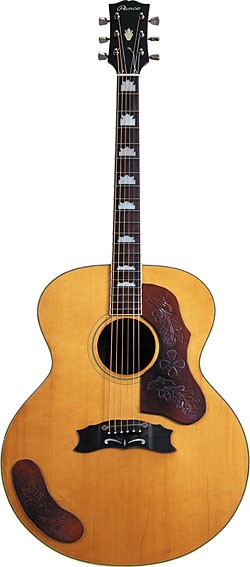2007 was another transitional year for Japanese-made Fender instruments, with the return to the “Made in Japan” country-of-origin identifier on the serial number decal. This was a running change, and both “Made in Japan” and “Crafted in Japan” decals appear on instruments from 2007 and 2008.
Over 7 years ago we started the Jag-Stang Registry with the goal of learning as much detail about the jag-stangs that were produced and the various countries around the world they have ended up. And we say a HUGE THANK YOU to everyone who has participated in our project so we can do info posts like this one.
- The Fender serial number decoder currently supports all documented MIA, MIJ, MIM, MIK and MII formats with the exception of Custom Shop, Relic and Reissue instruments. Please note that fender serial numbers tend to overlap by at least a year, and thereby the date of your guitar can only be approximated.
- Fender JV models had the serial numbers engraved into either the neck plate or bridge. Many also have penciled neck dates ( 6-14-82 ) you can only see when the neck is removed from the body of the guitar.
As of this post [May 2020] there are 799 unique jag-stang serial numbers in The Registry so we thought doing an analysis and breakdown of that serial number info would be interesting. Details are below.
Q: How many Made in Japan (MIJ) vs Crafted in Japan (CIJ) ?
| Serial | Count | Percent | Year(s) |
|---|---|---|---|
| MIJ | 437 | 54.7% | [1994-1997] |
| CIJ | 362 | 45.3% | [1997-2005] |
| Totals | 799 | 100% |
Q: How about the current breakdown of each serial number prefix?

| Serial | Count | Percent | Year(s) |
|---|---|---|---|
| MIJ T+6 | 39 | 4.9% | [1994-1995] |
| MIJ U+6 | 127 | 15.9% | [1995-1996] |
| MIJ V+6 | 271 | 33.9% | [1996-1997] |
| CIJ V+6 * | 37 | 4.6% | [1997] *see note |
| CIJ A+6 | 95 | 11.9% | [1997-1998] |
| CIJ O+6 | 15 | 1.9% | [1997-2000] |
| CIJ P+6 | 5 | 0.6% | [1999-2002] |
| CIJ Q+6 | 205 | 25.7% | [2002-2004] |
| CIJ R+6 | 5 | 0.6% | [2004-2005] |
| Totals | 799 | 100% |
**Note: CIJ V+6 seems to be a unique “transitional” MIJ to CIJ serial number. Shortly after opening up The Registry we encountered these serial numbers that do NOT exist in ANY of the japanese serial number dating tables we’ve seen. We currently believe this was the period of factory transition from FujiGen Gakki to Tōkai Gakki / Dyna Gakki – MIJ to CIJ. Contact us if you have more info.
Q: How has the appearance of the serial number changed over the life of the jag-stang?
We looked for the best representation of each serial number series we could find and are showing those below.
Years: 1997
Note: This series changes “MADE IN JAPAN” to “Crafted in Japan”. This is the serial number series we refer to as “transitional” that does not appear in most date tables. See note in preceding section.
Fender Japan Serial Numbers And Dates
Years: 1997-1998
Note: This series of serial numbers has a leading “s/n” instead of “serial number” text.
Years: 1997-2000
Note: The “Crafted in Japan” typography changes in this series. Also note the change back to using full “serial number” text from “s/n”. (This is the best quality photo of this series we have currently. If you have a better one please get in touch.)


Years: 1999-2002
Note: This series continues the cursive style “Crafted in Japan” typography.
Years: 2002-2004
Note: Notice the change in “Crafted in Japan” typography again in this series from the previous.
American Fender Serial Numbers
Years: 2004-2005
Note: No change from previous series.
Fender Japan Serial Number
We plan to add a stats page, similar to this blog post, to The Jag-Stang Registry in the future. If you own a Fender Jag-Stang and would like to join The Registry click HERE. You can find Fender’s information on Japanese serial numbers HERE. Feel free to contact us if you can provide any information or images that can help add detail to this post.